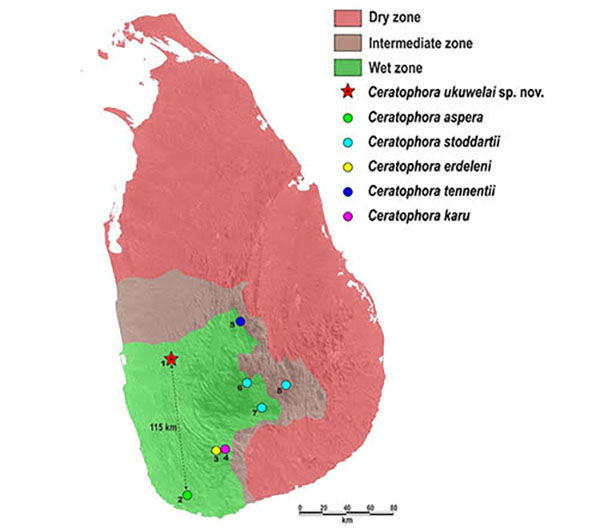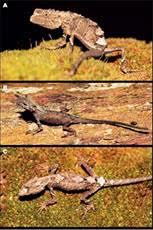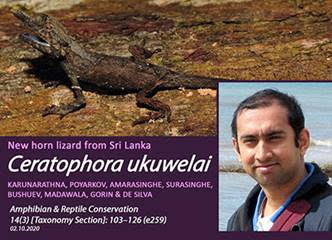New species of horn-lizards discovered in Sri Lanka’s Salgala forest- By Ifham Nizam

A new species of the genus Ceratophora (horn-lizards) found in the Salgala forest in the Kegalle district in the northern part of the wet bioclimatic zone, has been named to honour a renowned scientist in Sri Lanka.

The species, which is new to science, has been named Ceratophora ukuwelai sp. Nov., in honour of Dr. Kanishka Ukuwela for his remarkable contribution to science here and South Asian herpetofauna.
Ceratophora ukuwelai is an elusive species known to exist only in the Salagala forest in Kegalle district. Considering rapid habitat destruction in the area, experts have recommended the species be listed as Critically Endangered (CR) following IUCN criteria.
The scientific team comprises Suranjan Karunarathna, Nature Explorations and Education Team, Nikolay A. Poyarkov and Vladislav A of Department of Vertebrate Zoology, Lomonosov Moscow State University, Leninskiye Gory, GSP–1, Moscow, Russia, Andrey V. Bushuev, Joint Russian-Vietnamese Tropical Research and Technological Center, Vietnam, Thilina Surasinghe of the Bridgewater State University, Bridgewater, Massachusetts, USA, Majintha Madawala of Victorian Herpetological Society, Victoria, Australia and Dr. Anslem De Silva, Amphibia and Reptile Research Organization of Sri Lanka.

Horn-lizards comprise six species, all of which are endemic to Sri Lanka. The new species most closely resembles Ceratophora aspera Günther, 1864, but can be distinguished by its body proportions.
More than two decades ago, Sri Lanka’s foremost authority of biodiversity, Dr. Rohan Pethiyagoda and his deputy, Dr. Kelum Manamendra-Arachchi, discovered two more species of Ceratophora from the southern part of Sri Lanka.
Scientist Ranjan Karunarathna told The Sunday Island that their analysis demonstrated that the Salgala population is indeed a new species sister to C. aspera, but these lineages have diverged a long time ago, most likely since the late Miocene, which is much earlier than the split between C. stoddartii and C. erdeleni, for example. This divergence is concordant with differences in body proportions and scalation.
Nikolay A. Poyarkov says during the evolution of Sri Lankan agamids the rostral horn suddenly appeared or disappeared in certain lineages, and the drivers behind this saltorial evolution are still poorly understood.








No Comments